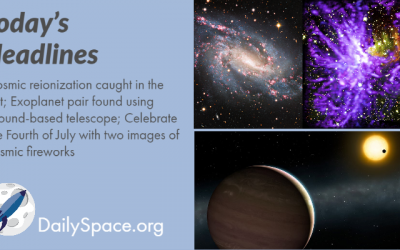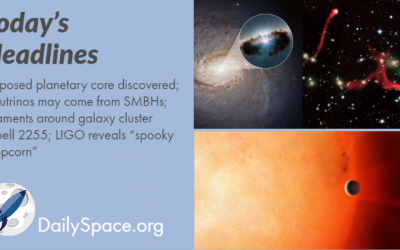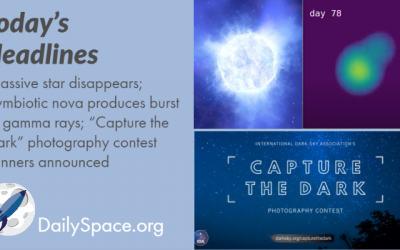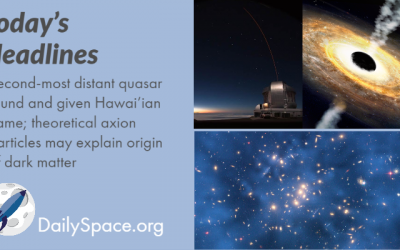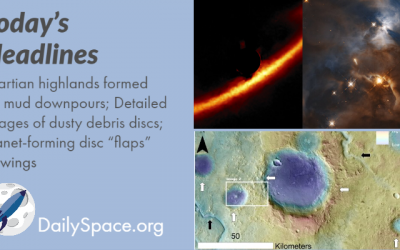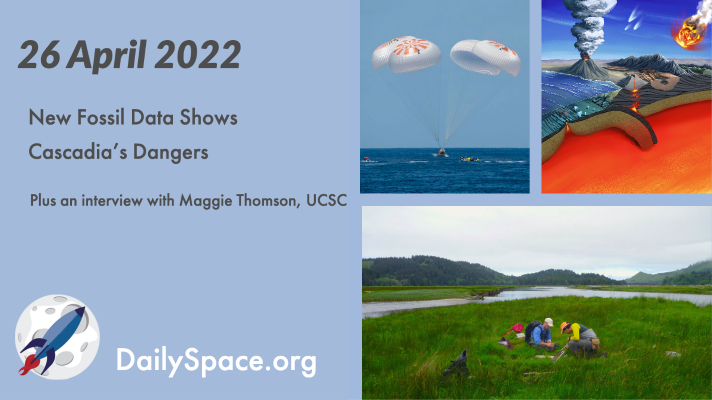
New Fossil Data Shows Cascadia’s Dangers
An analysis of sediment core samples taken at the Salmon River Estuary in Oregon provides evidence that the massive 1700 Cascadia earthquake caused 15 meters of slip along the shoreline, which lead to over a meter of coastal subsidence. Plus, all the rocket launches, a few mission updates, making Mars bricks with urea, and an interview with Maggie Thompson from UC Santa Cruz about using methane as a biosignature.
Catch us on NowMedia TV
Saturday 11pm Central / midnight Eastern
Sunday 10pm Central / 11pm Eastern
Watch live on these stations: Houston 21.10, Atlanta 22.10
or tune-in on Apple TV, Roku, YouTube Live, or Amazon Prime
Cosmic reionization caught in the act; Exoplanet pair found using ground-based telescope; Celebrate the Fourth of July with two images of cosmic fireworks
Join us today as we talk some more about cosmic reionization and the mounting evidence it occurred very early in the Universe. We also look at two exoplanets, found using a ground-based telescope, that are gravitationally interacting. And we celebrate the Fourth of July here in the United States with some newly released images of cosmic fireworks.
Exposed planetary core discovered; neutrinos may come from SMBHs; filaments around galaxy cluster Abell 2255; LIGO reveals “spooky popcorn”
Join us today as we talk about the first exposed planetary core ever discovered. We examine research that neutrinos may come from supermassive black holes. We look at the filaments found in the halo of galaxy cluster Abell 2255. And we find out that LIGO’s mirrors can vibrate due to quantum noise. Plus an interview with Dr. Matthew Graham of Caltech.
Rocket Roundup for July 1, 2020
Our one and only launch of the week was yesterday, June 30th, with a brand new SpaceX Falcon 9 booster carrying the latest addition to the GPS constellation from Cape Canaveral at 8:10 pm UTC.
Massive star disappears; Symbiotic nova produces burst of gamma rays; “Capture the Dark” photography contest winners announced
Join us today for our top story: a massive star has disappeared, probably due to dust but maybe not. Also, we explain how a symbiotic nova occurs and produces gamma rays. Finally, we are pleased to share some of the winners and runners up in the “Capture the Dark” photography contest from the International Dark Sky Association.
Second-most distant quasar found and given Hawai’ian name; theoretical axion particles may explain origin of dark matter
Join us today as we look at big news on a big quasar! Pōniuāʻena is the second-most distant quasar ever found, and its existence challenges conventional black hole formation theory. Also, we explain how the theoretical axion particle might be involved in the origin of dark matter.
Martian highlands formed by mud downpours; Detailed images of dusty debris discs; Planet-forming disc “flaps” its wings
Join us today as we look at a possible explanation for how mudstone formed in the Martian highlands. We share a plethora of new images from the Gemini Planet Imager of detailed, dusty discs around stars. And finally, Hubble sees another planet-forming disc flap its bat-wings.


 We record most shows live, on Twitch. Follow us today to get alerts when we go live.
We record most shows live, on Twitch. Follow us today to get alerts when we go live.

